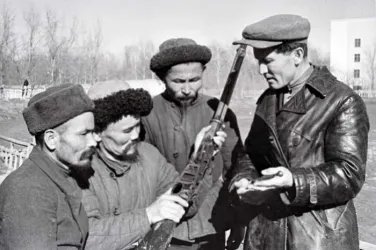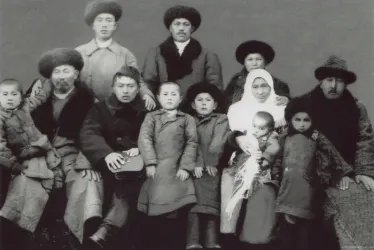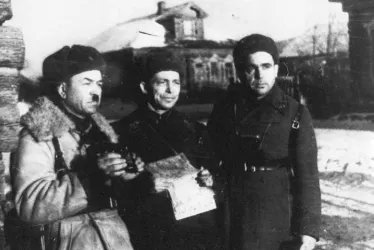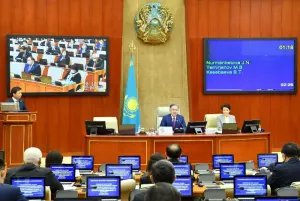75th Anniversary of Victory: How Kyrgyz People Fought and Worked During War Years
22 April 2020
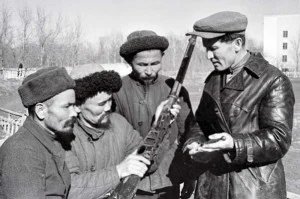
The IPA CIS continues a series of publications telling about fraternal peoples fighting during Great Patriotic War and protecting the common Motherland. This material is devoted to the courage and dedication of the Kyrgyz people in 1941-1945.
Kyrgyzstan Natives on Frontline.
Over 360 thousand Kyrgyz fought in the Great Patriotic War, over 90 thousand did not return from the frontline. More than 150 thousand warriors were awarded with orders and medals, and 29 of them became Full Cavaliers of the Order of Glory, and 73 more became the Heroes of the Soviet Union.
The famous 316th Infantry (Panfilov) Division was formed in Kyrgyzstan and Kazakhstan. The fighter of the Panfilov division Duyshenkul Shopokov became the first Kyrgyz – Hero of the Soviet Union. Among the other Heroes of the Soviet Union who glorified Kyrgyzstan are Cholponbay Tuleberdiev and Dair Asanov.
The heroic deed of the Kyrgyz pilot Ismailbek Taranchiev remained unknown for a long time. On 18 March 1944, while carrying out a combat mission near Narva, he clashed his flame-laden plane with a group of enemy tanks.
The political instructor of the battalion, Hero of the Soviet Union Kalynur Usenbekov showed great valor during the assault of Berlin.
Kyrgyz Economy During War Years.
Already in the first year of the war, the collective and state farms of Kyrgyzstan managed to supply more grain, cotton, meat and wool than in the pre-war 1940. In total, during the 1941-1945 period, the Kyrgyz collective and state farms harvested 303,6 thousand tons of bread and 22,3 thousand tons of potatoes. About 74 thousand tons of grain and over 8 thousand tons of meat were donated to the defense fund. In addition, the Red Army received over 54 thousand horses from Kyrgyzstan.
More than 30 large factories and workshops were evacuated from the western and central regions of the USSR to the Republic. In total, over 70 enterprises were commissioned in Kyrgyzstan in the war years. The volume of industrial production in 1945 increased by 22% compared to 1940, engineering and metalworking products increased 3,5 times (engineering – more than 10 times), electricity production – 1,5 times.
In Memory of Heroes: Ala-Too Mountains Will Remind of Kyrgyz Liberators of Rzhev.
An obelisk depicting the snowy peaks of Ala-Too surrounded by Tien Shan blue spruces to commemorate the 75th anniversary of the Victory in the Great Patriotic War will be erected in the city of Rzhev. The monument will commemorate more than 17 thousand Kyrgyz, who died in the battle of Rzhev, one of the bloodiest in the World War II.
This initiative was supported by President of the Republic of Kyrgyzstan Sooronbay Jeenbekov.
The Kyrgyz delegation has repeatedly visited the city and taken part in commemorative events, such as the events dedicated to the Day of Remembrance and Sorrow on 22 June, funeral services for soldiers, who died on the Volga, burial of the remnants discovered during searches, and requiem rallies.
As Long as These Threads Exist, We Can Always Understand Each Other.
The Kyrgyz sniper Abykey Toktaliev was a true hero. For many years his relatives did not have accurate information about the circumstances of his death and place of burial. Several years ago, his relative, member of the Jogorku Kenesh of the Kyrgyz Republic Kanybek Imanaliev sent a request to the Central Archive of the Ministry of Defense of the Russian Federation to find out where Abykey Toktaliev was buried. With the help of his Russian colleague, member of the State Duma of the Federal Assembly, Colonel General Viktor Zavarzin, we managed to find out that Abykey Toktaliev died of injuries on 7 July 1942 and was buried at the crossroads of highways in the Pushkin district of St. Petersburg.
The story of a young Kyrgyz sniper, who died in the summer of 1942 near Leningrad, is one of the millions of threads that connect the post-Soviet space, forming our common historical memory.


